Travel Information
¡Ü Seoul
http://www.visitseoul.net/english_new/index.htm
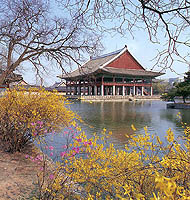
Gyeongbokgung
Gyeongbokgung Palace was built in 1395, the fourth year of the reign of King Taejo. The palace, named 'Gyeongbok' or 'shining happiness' was built as a tribute to the permanent happiness and prosperity of Korea's kings, their children and the people of the nation. It was burnt down during the Japanese invasion of 1592, and was left in ruins until being rebuilt in 1865, during the 2nd year of the reign of Prince Regent Daewongun.
Many of the buildings at the palace were demolished during the Japanese colonial period. However, in the 1990s, the government launched restoration of the palace, and it has now been restored to its original state. On the site stand Geunjeongjeon, Gyeonghoeru, Hyangwonjeong, and Amisan Chimney, all in their original states.
The palace will allow visitors to get a better understanding of the culture and heritage of Korea.
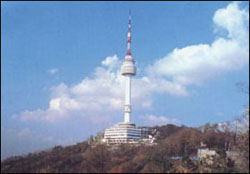
Namsan Park
The Namsan Park is located at the center of Seoul and the location covers both Junggu and Yongsangu. The park was decided to be built according to the City Facility Plan on March 1940. The total area is 2,956,928m2 and the height is 265m.
The original name of the mountain was Inkyeong Mt. However, the mountain was named as "Namsan" since it was located on the southern part of Seoul when the King Taejo(Lee Seonggae) moved the capital from Gaeseong into Seoul following the theory of geomancy. The mountain had suffered damages from establishments of Japanese shrines, colonial government buildings and the military camps during the Japanese Imperial Period. However, the mountain has recovered from the damages thanks to the rehabilitation efforts between 1991 and 1998.
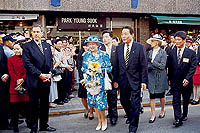
Insadong
Insa-dong is the ideal place for visitors who want to experience the true character of Korean art, with its subtle, enduring beauty. Once you are in Insa-dong, you will immediately be drawn to the small alleys lined with numerous shops and galleries, both tiny and spacious: antique shops, Korean stationery stores, frame shops, handicraft shops, pottery and porcelain shops, bookstores and painting studios, and art supply stores. In addition, restaurants and cafes serve traditional food and teas.
During her visit to Korea in 1999, and to Insa-dong in particular, Britain's Queen Elizabeth II expressed deep admiration for the hanbok, Korea's traditional dress, and for Korean pottery in particular. The Insa-dong Festival, held every October, showcases pungmulnori, or folk musical instrumental performances, and features a food court serving local cuisine from regions all across the country. Recently, a shuttle bus service linking galleries in different parts of Seoul has started running between Insa-dong and Pyeongchang-dong.
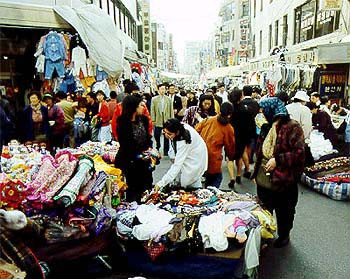
Namdaemun Market
As Korea's largest and oldest traditional market, Namdaemun is a barometer of Seoul's economic situation and where Seoulites can comparison shop for the lowest prices on all sorts of goods. It is also a world-famous shopping paradise and an attraction that tourists should not miss. At Namdaemun, a great deal of effort has been made to foster a tourist-friendly atmosphere. Information is available for local residents and tourists and free interpretation services (both in English and in Japanese) are readily offered to foreign tourists.
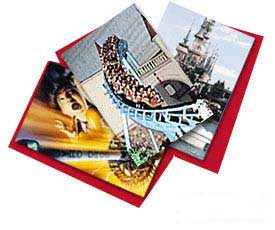
Lotte World
Lotte World, an all-weather recreational complex offering sightseeing, adventure, mystery, sports activities and cultural events in one place, is comprised of numerous indoor and outdoor facilities. Lotte Adventure, an indoor theme park area measuring 25,000 pyeong (82,650 square meters), keeps visitors dry even on rainy days with a glass dome that covers the entire space. Magic Island, Korea's first park built around a lake, is linked to Lotte Adventure via monorail system and overpass. Recently, the most popular ride on Magic Island is Gyro Drop, where brave souls experience the thrill of a Bunjee jumping, and at the same time enjoy the beautiful scenery of Seokchon Lake. The Trevii Fountain in the Jamsil Station Plaza on Subway No. 2 Line, which is directly linked to the Lotte World entrance, is a popular gathering spot for all, whether young or old, and for families visiting the theme park.

Hangang Pleasure Boats
In 1986 ferry cruises were started along the sinuous waterway of Hangang River, which flows through the heart of Seoul from the east to the west. Currently there are four ferry terminals, six cruise boats, and 10 motorboats, all offering leisurely excursions. The ferry terminals are located by the riverside at Yeouido, Jamsil, Ttukseom, and Yangwha. Each terminal has a lounge below the deck. The sightseeing boats can be reserved for special occasions including parties, ceremonies, recitals, meeting and seminars.
The blazing glow of the setting sun, the sparkling night scenery of Seoul, the cool breeze on the deck on hot midsummer days, or snowy rides on winter days, all have a romantic ambiance.
¡Ü Jeju Island
http://english.tour2jeju.net/main/
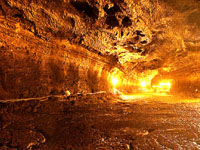
Manjang Cave
Manjang Cave, situated at Donggimnyeong-ri, Gujwa-eup, North Jeju, 30 kilometers east of Jeju City, was designated as Natural Monument No. 98 on March 28, 1970. The 7,416-meter long cave has been officially recognized as the longest lava tube in the world. The annual temperature inside the cave ranges from 11¡É to 21¡É, thus facilitating a favorable environment throughout the year. The cave is also academically significant as rare species live in the cave. Created by spewing lava, "the lava turtle", "lava pillar", and "Wing-shaped Wall" look like the work of the gods. It is considered to be a world class tourist attraction.

Jeongbang Waterfall
With Seopseom and Beomseom Island in front, the Jeongbang Waterfall is right at the edge of the ocean. The Jeju people believed that a holy dragon lived under the waterfall. It has been said that since the water has its spirit, it has cured illnesses and caused rain to fall during a drought. In addition, there is another small waterfall nearby, looking like a servant waiting on a dignified lord. Thats why it was chosen as one of the scenic wonders of Jeju among other big waterfalls in Jeju.
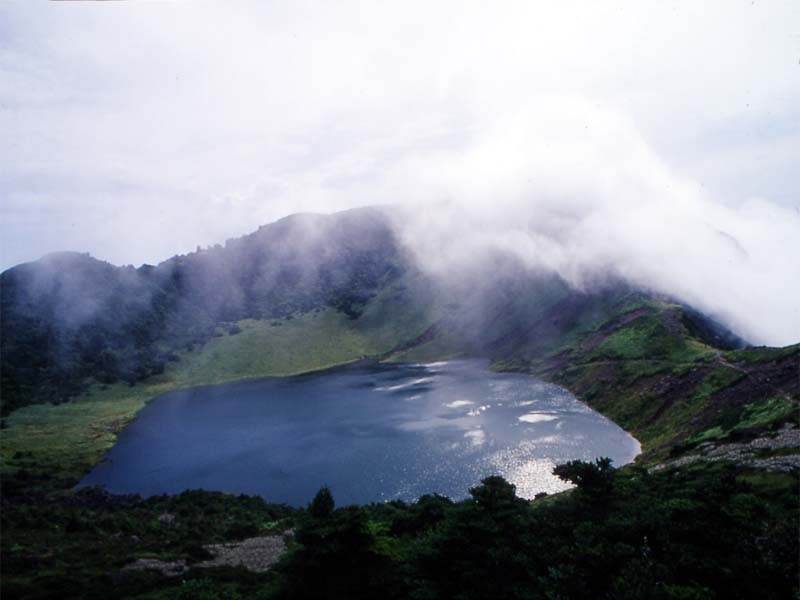
Mount Halla
Mount Halla is the mountain of one of the three gods and is a notable mountain. It stands at the center of Jeju Island, spreading east and west. The east face is steep, the north side is gentle, and the east and west form a flat, wide highland. Mount Halla is a dormant volcano created by volcanic activities during the quaternary period of the Cenozoic era.It is primarily covered with basalt. On its top is a crater Baeknok Lake. This mountain is a home to alpine plants and houses as many as 1,800 species of flora. It also boasts luxuriant natural forests and vast grasslands. In addition, precipitous cliffs and slopes, and unusual rock formations standing along valleys produce magnificent scenic views. The community of azaleas also adds to the beauty of Mount Halla. Mount Hallas autumnal tints and snow-covered scenes have been selected as the best of the best.
The 43 kmlong Road 5.16 crossing the eastern waist of the mountain from Jeju City to Seogwipo City is considered to be one of the excellent tourist roads in Korea. Along this road, there are many tourist attractions such as Sancheondan and Seongpanak, and people can enjoy the royal azalea blossoms in spring, lush, green woods in summer, colorful foliage in fall, and a glistening landscape of snow in winter. While enjoying the scenes, the road takes you to Seogwipo City and brings a scenic view of many different beaches.
The 37km-long Road 110 crossing the western waist of the mountain from Jeju-shi to Jungmun runs through a high ground which is 110m high above the sea level, and it passes by Eoseungsang Reservoir that is a source water for Jeju islanders and 99 Passes where, a legend says, neither a king nor a tiger are born because it is one short to 100 passes. It also passes closely by Youngsil Giam (Youngsil Grotesque Rocks).
It is possible to climb up to Wetse Oreum along Eorimok Trail and Youngsil Trail and to the top along Seongpanak Trail and Kwaneumsa Temple Trail.

Yeomiji Botanical Gardens
The largest botanical garden in Asia, the magnificent glass Yeomiji Conservatory has collected and displayed 1,200 species of subtropical and tropical plants. There are five permanent gardens as well as the temporary horticultural displays and flower shows.
You can stroll through the traditional outdoor gardens of Korea, Japan, Italy, and France, admiring the unique classical design of each. A sightseeing train that accommodates 69 passengers will give a quick overall view of the outdoor gardens. Families love to picnic on the vast green lawns surrounding the conservatory.
Yeomiji Botanical Garden is committed to protecting endangered and rare species of Jeju Island and has joined the international efforts to preserve the natural environment.
When visitors learn of the meaning of Yeomiji - a Chinese word consisting of three letters with "yeo" meaning "such," "mi" "beauty" and "ji" "land," which combines to mean a "garden paradise"- they completely agree!
Brochures and leaflets on Jeju and Yeomiji are available in many languages and you are best served by our knowledgable and dedicated staff.

Udo Island
The island was named "Udo" or "Cow Island" as its contours look like a cow lying down on the ground. There are 8 scenic wonders of Udo: day and night Judan-myeongwol and Yahang-eobeom), sky and earth (Cheonjin-gwansan and Jidu-cheongsa), front and back (Jeonpo-mangdo and Huhae-seokbyeok), and east and west (Dongan-gyeonggul and Seobin-baeksa)
The movie "In October" and "The mermaid" were shot at Cow Island, capitalizing on its picturesque scene of a fishing village and a lush, peaceful grassy field. The white sand beach facing the indigo and turquoise sea of Jeju is very impressive. It represents another eye-catcher along with Mt. Halla in Jeju.
People started settled down in Cow Island from the 9th year of the reign of Hyeon Jong. Some lived in Cow Island before that, but since the 23rd year of the reign of King Sunjo (1823), people frequently visited Cow Island for commercial purposes such as harvesting sea food and raising military horses on ranches.
From the 23rd year of the reign of King Sunjo (1823), Jeju people made requests to central government for the reclamation of Cow Island. This was finally approved in the 8th year of the reign of King Hyeon-jong. However, people did not go to Cow Island to clear the land until after the horses at the ranch was moved to other place.
Many people were born and raised on Cow Island. Since marrying someone from the same village was common in the past, the majority of the people have Oeoga (mother s maiden home), Cheoga (the house of wife s parent s), Chinjeong (the parent s home of a married woman) and Chinga (maiden home) in Cow Island. B ecause of this unique social bond, most of them choose to stay in Cow Island. Just look at the comments from some of the Cow Island people: "My ancestors have lived here for a long time." and "Our whole family was born and raised here." Personal and regional affiliation is really strong on Cow Island.
Kimhae Kim, Jeju Ko, Jeju Yang, Papyeong Yun, Gokbu Gong, Jinju Kang, Jinju Jeong are the predominant family names on Cow Island. Among them, Kimhae Kim, Jeju Ko in Joil-ri, Jeju Ko in Obong-ri are the most influential, making a family name-based small village. Interestingly, a distinctive social structure by affiliation cannot be seen.
The Cow Island lighthouse is located 132 m high on Someori oreum at the southernmost tip of Cow Island. Sea erosion is easily seen along the coast except for the southern coast and Takjinpo in the northeast. Except for Someori oreum, a secondary volcano of Mt. Halla, the entire island is a lava plateau with a vast and fertile plain. Sweet potatoes, barley, and garlic are the main products of Cow Island. Mackerel, cutlass fish, and abalone can be caught in the sea. Along with raising cows and pigs, it is well-known for the harvesting of sea product by women divers (Haenyeo).

Seongsan Ilchulbong (Sunrise Peak)
99 rocky peaks surround the crater like a fortress and the gentle southern slope connected to water is a lush grassland. On the grassland at the entrance of Sunrise Peak, you can enjoy horseback riding. Breathtaking scenic views while taking a rest in the middle of climbing up the peak such as Mount Halla, the deep blues of the ocean, the multi-colored coast line, and the picturesque neighboring villages will become unforgettable memories.